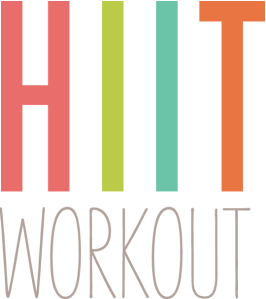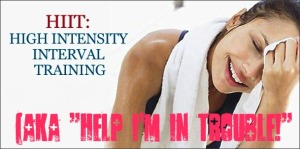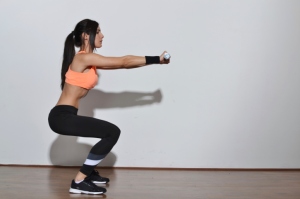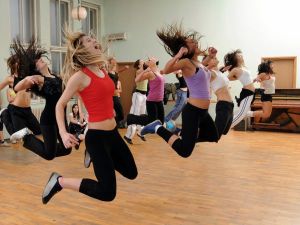The therapeutic properties of exercise is well supported by a substantial amount of research.
Recent
studies reported that an increase in the time dedicated to physical
health-based activities is not associated with a decline in academic
performance.
THE benefits of exercise are well publicised. Exercise is associated
with a reduction in physical illnesses such as cardiovascular disease,
colon and breast cancer, obesity and mental illness (including
depression and anxiety disorders) across the adult lifespan.
The
National Health and Morbidity Survey 2011 revealed that about 64.3% of
Malaysians were physically active. The level of physical activity
gradually decreased with increasing age, and this was particularly
apparent in senior citizens.
Despite evidence of the importance
of exercise, the prevalence of overweight and obese Malaysians was 29.4%
and 15.1% respectively based on the World Health Organization (1998)
classification.
Although some are aware of the benefits of
exercise, there are many who are unaware that exercise has considerable
benefits for the brain. This is put aptly by John Ratey, author of
A User’s Guide to the Brain.
“Exercise is really for the brain, not the body. It affects mood, vitality, alertness and feelings of well-being.”
There
is increasing evidence that exercise can improve learning and memory,
delay age-related cognitive decline, reduce risk of neurodegeneration
and alleviate depression.
Exercise and brain function
Exercise
improves brain function in different ways. It enhances learning and
plasticity, is neuroprotective, and is therapeutic and protective
against depression
Exercise enhances learning and plasticity,
which is the capacity of the brain and nervous system to continuously
alter neural pathways and synapses in response to experience or injury.
Although
some are aware of the benefits of exercise, there are many who are
unaware that exercise has considerable benefits for the brain.
The
effects of exercise have been demonstrated in ageing human populations
in which sustained exercise has augmented learning and memory, improved
executive functions, impeded age-related and disease-related mental
decline, and protected against age-related atrophy in parts of the brain
areas that are vital for higher cognitive processes.
Physical
activity has a positive effect on cognition, which includes every mental
process that may be described as an experience of knowing (including
perceiving, recognising, conceiving, and reasoning).
There is a
significant relationship between physical activity and improved
cognition in normal adults as well as those with early signs of
Alzheimer’s disease (AD), in which there is mild impairment of memory or
cognition.
There is a dose-response relationship between
exercise and health-related quality of life, with moderate exercise
associated with the best outcomes.
The literature on the effects
of exercise on cognition during children’s development is less
substantial. However, a meta-analysis by Sibley & Etnier reported a
positive correlation between physical activity and cognitive performance
in children aged between four and 18 years in eight categories, i.e.
perceptual skills, intelligence quotient, achievement, verbal tests,
mathematic tests, memory, developmental level/academic readiness and
others.
A beneficial relationship was found for all categories,
with the exception of memory, which was unrelated to physical activity
behaviour, and for all age groups, although it was stronger for children
in the ages of four to seven and 11 to 13 years, compared with the ages
of eight to 10 and 14 to 18 years.
Recent studies have reported
that an increase in the time dedicated to physical health-based
activities is not associated with a decline in academic performance.
The
literature on the impact of exercise on cognition in young adults is
limited, probably because cognition peaks during young adulthood and
there is little room for exercise-related improvement at this stage of
the lifespan.
Although there is considerable evidence that
exercise can facilitate learning in humans and other animals, there are
gaps in knowledge regarding the types of learning that are improved with
exercise.
 Therapeutic exercise programmes after a stroke accelerates functional rehabilitation.
Therapeutic exercise programmes after a stroke accelerates functional rehabilitation.
Exercise
protects the brain (neuroprotective). It reduces the impact of brain
injury and delays the onset and decline in several neurodegenerative
diseases. For example, therapeutic exercise programmes after a stroke
accelerates functional rehabilitation.
Furthermore, physical
activity delays the onset and reduces the risk for AD, Huntington’s
disease and Parkinson’s disease, and can even slow functional decline
after neurodegeneration has begun.
There is evidence that exercise is therapeutic and protective in depression, which is associated with a decline in cognition.
Depression
is considered to be a health burden that is greater than that of
ischaemic heart disease, cerebrovascular disease or tuberculosis.
Clinical
trials have reported the efficacy of aerobic or resistance training
exercise in the treatment of depression in young and older patients,
with benefits similar to that of antidepressant medicines. More exercise
leads to greater improvements.
Trials have also reported
improvement in depressive symptoms in AD compared to those
non-exercising individuals whose depressive symptoms worsened.
Bipolar disorders do not appear to respond as well to exercise, but those with anxiety respond even faster.
There
is a convergence of the concept that brain health and cognition are
influenced by the interplay of various central and peripheral factors.
Brain function is believed to be impaired by peripheral risk factors
that lead to cognitive decline, including hypertension, hyperglycemia,
insulin insensitivity and dyslipidemia, features that are commonly known
as the “metabolic syndrome”.
Of these factors, hypertension and
glucose intolerance play crucial roles. Exercise not only reduces all
these peripheral risk factors but also improves cardiovascular health,
lipid–cholesterol balance, energy metabolism, glucose use, insulin
sensitivity and inflammation.
As such, exercise improves brain
health and function by directly enhancing brain health and cognitive
function, and indirectly, by reducing the peripheral risk factors for
cognitive decline.
It is believed that exercise initiates an
interactive cascade of growth factor signals which lead to the
stimulation of plasticity, improvement of cognitive function, reduction
of the mechanisms that drive depression, stimulation of neurogenesis and
improvement of cerebrovascular perfusion.
Although much is known
about the effects of exercise and physical activity on brain and
cognition, there are many important questions that are unanswered.
They
include questions like the design of exercise interventions which
optimise the effects on cognition and brain health; when it is best to
begin; what are the best varieties, intensities, frequencies and
duration of exercise; is it ever too late to start an exercise
programme; and can exercise be used to reduce the effects of
neurodegenerative diseases.
Knowing the how
Exercise
affects many sites in the nervous system and stimulates the secretion
of chemicals like serotonin and dopamine, which make humans feel calm,
happy, and euphoric. You do not have to wait for these feelings to occur
– you can initiate them by exercising.
There is no shortage of
advice on the various physical exercises that enhances cardiovascular
health. Prior to embarking on exercise, a consultation with the doctor
would be helpful, especially for senior citizens. This will help in
choosing the appropriate exercise for one’s individual situation.
In general, what is good for the heart is also good for the brain.
The
usual recommended minimum is half an hour of moderate exercise thrice a
week. This can be walking, jogging, swimming, playing games, dancing
etc.
The public is often reminded about a healthy lifestyle,
which is focused on physical health. However, it is also important to
exercise mentally and keep the brain healthy.
There are
publications and activities available that can help you make a start and
continue to improve cognition, memory, creativity and other brain
functions.
Anyone at any age can do so, even senior citizens. It is moot to remember the adage: if you don’t use it, you lose it.
Malaysia Festival of the Mind 2013
The
ninth Malaysia Festival of the Mind will be held from June 15-16, 2013,
at Universiti Tunku Abdul Rahman (UTAR) Perak Campus in Kampar, and
June 22-23 at Tunku Abdul Rahman University College (TARC) Main Campus
in Setapak, Kuala Lumpur.
It is open to the public from 9.30am -
4.30pm. Talks, workshops, exhibitions and competitions will be held to
create awareness about the human mind and its unlimited potential; as
well as ways of tapping into and developing one’s brainpower to the
fullest.
For further information, visit
www.utar.edu.my/mmlm or email
mmlm@utar.edu.my or call (03) 7625 0328 (Justin/Sin Yee) or (05) 468 8888 (Wei See/Jamaliah).
By Dr MILTON LUM
>
Dr
Milton Lum is a member of the board of Medical Defence Malaysia. This
article is not intended to replace, dictate or define evaluation by a
qualified doctor. The views expressed do not represent that of any
organisation the writer is associated with. For further information,
e-mail starhealth@thestar.com.my.
The information provided is for educational and communication purposes
only and it should not be construed as personal medical advice.
Information published in this article is not intended to replace,
supplant or augment a consultation with a health professional regarding
the reader’s own medical care. The Star does not give any warranty on
accuracy, completeness, functionality, usefulness or other assurances as
to the content appearing in this column. The Star disclaims all
responsibility for any losses, damage to property or personal injury
suffered directly or indirectly from reliance on such information.
Related post:
Rightways for Heart Health
 The arduous Pacific Crest Trails offered the author of The Girl In The Woods the chance to take back control of her life after being raped.
The arduous Pacific Crest Trails offered the author of The Girl In The Woods the chance to take back control of her life after being raped.  Author: Aspen Matis
Publisher : William Morrow/HarperCollins, non-fictionNature and the wilderness is often portrayed as a place of peace and isolation, but any illusion that the wilderness of the Pacific Crest Trail is isolated and peaceful is proven false in Wild Child’s experiences along the trail. The Pacific Crest Trail hiking line is a male-dominated environment, peopled with strange men and women, and offers very little protection from physical or verbal violence stemming from racism, misogyny, or sheer sadism.
Author: Aspen Matis
Publisher : William Morrow/HarperCollins, non-fictionNature and the wilderness is often portrayed as a place of peace and isolation, but any illusion that the wilderness of the Pacific Crest Trail is isolated and peaceful is proven false in Wild Child’s experiences along the trail. The Pacific Crest Trail hiking line is a male-dominated environment, peopled with strange men and women, and offers very little protection from physical or verbal violence stemming from racism, misogyny, or sheer sadism.






















